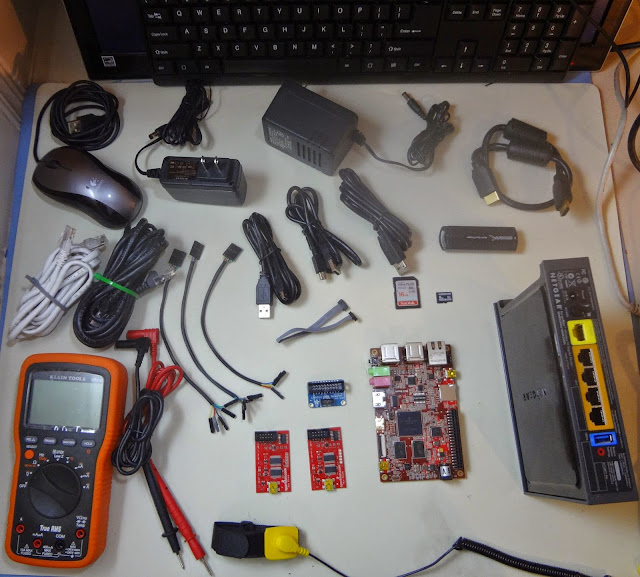The RiOTboard - an ARM Cortex-A9 based SBC
The RIoTboard is an ARM Cortex-A9 based single board computer (SBC). The RIoTboard has a Freescale i.MX6 Solo application processor and an integrated Freescale Kinetis MCU for additional debugging and development. The i.MX6 Solo supports the single ARM Cortex-A9 MPCore Platform. The i.MX6 Solo contains ARM TrustZone technology and the i.MX 6 SoC on the RIoTboard has a 96 KB Boot Rom with support for high assurance boot. Other features of the board include 1 GB of DDR3 memory, 4 GB eMMC, JTAG, Serial, mini USB for OpenSDA, mini USB for USB OTG, LVDS, parallel RGB expansion, 4 USB-A ports, HDMI, audio, reset button, microSD card slot, SD card slot, and boot onboard boot switches. The board is very reasonably priced. Last but not least, the Freescale i.MX 6 ARM Cortex-A9 application processor has ARM TrustZone technology.
The i.MX6 Solo processor on the RIoTboard is labeled MCIMX6S8DVM10AB. According to the i.MX6 Solo data sheet, the processor supports a number of security related features. The list includes ARM TrustZone technology with TZ architecture support, a secure JTAG controller for locking down and protecting the JTAG port, a cryptographic acceleration and assurance module with secure RAM and a true PRNG, a central security unit (CSU) including secure non-volatile storage, high assurance boot, and the separation of memory and interrupts between secure world and normal world. There are more security related features but this is a general list.
Setting up a RIoTboard
Short of having access to JTAG hardware debuggers, a Bus Pirate can be used in conjunction with OpenOCD for debugging the i.MX 6 processor on the RiOTboard. A bus pirate can also be used in transparent UART bridge mode for connecting the host to the target (the RiOTboard).
This type of setup can be very useful for debugging embedded devices, analyzing embedded devices, developing software for embedded devices, and testing embedded devices prior to production.
 |
| The Netgear WNR3500U (right) can run multiple operating systems. |
- Digital multimeter for testing continuity of JTAG, SWD, and Serial cables
- Proper ground and wrist strap
- 2x ethernet cable
- WNR3500U router
- microSD card 8 GB Class I
- SD card 8 GB Class I
- RiOTboard
- 5 VDC power supply for RiOTboard
- 2x Bus Pirate
- Cortex SWD 10 to 20 pin adapter
- 2x 5-pin female to female breakout cable
- FTDI mini USB to 5-pin female breakout board
- 4-pin female to female breakout cable
- HDMI cable
- USB mouse
- USB keyboard
- Display
- Host computer with Linux (Fedora 21)
- 4x mini USB to USB-A cables
- 10-pin female to female SWD / JTAG cable
- Card reader
Using the Bus Pirate as a transparent UART bridge
 |
| RiOTboard connected via JTAG and UART to Host |
No comments:
Post a Comment
Note: Only a member of this blog may post a comment.